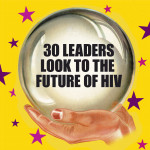Are We the World?
It should have been the year that we—that is, the human family—finally took measure of what even Secretary of State Colin Powell was calling the world’s worst threat: the scourge of global AIDS. Currently, there are 40 million people infected worldwide—the great majority of them in sub-Saharan Africa. But despite high hopes, 2003 proved difficult and disappointing. In our January 2003 cover story, “Global Fund and Games,” investigative journalist Stephanie Nolen reported on the bottom line: Although $2.1 billion had been pledged to the U.N.’s Global AIDS Fund—a fraction of the $50 billion Secretary-General Kofi Annan had requested—only $650 million had been delivered. What’s more, the United States, which had promised $500 million to the fund, had turned over only $275 million as of October 2002. The Fund, Nolen discovered, was nearly broke. And although President Bush began 2003 on a compassionate note—proposing a five-year, $15 billion emergency global AIDS plan in his State of the Union address—he ultimately failed to put his money where his mouth was: By year’s end he had delivered only $2.4 billion of the $3 bilpromised for each year of his global plan. As distressing was the fact that funds were a windfall for abstinence-only groups.
“The U.N. estimates that $5 billion was spent in 2003 on global AIDS,” says Paul Zeitz, MD, director of the DC–based Global AIDS Alliance. “That’s about half of what’s needed for a bare-bones response. We are the richest country by far—our donations should account for 30 percent of the Fund.”
Like most global AIDS advocates, Zeitz teeters between despair and optimism. Despair because the developed world has apparently turned its back on the holocaust. And optimism…just because. Zeitz and his colleagues can hope only that Bush’s February 2004 promise of yet another five-year, $15 billion emergency AIDS package will fly. Plus, the cause finally has its celebrity quotient: Bono, Oprah. And private foundations have also come through, most notably the Gates Foundation, which has ponied up an amount to rival the U.S.’s own donation.
But at the end of the day, Zeitz says, only a monumental gesture by the world’s only superpower will check the catastrophe. “We all talk about it a lot,” he says wearily. “Now’s the time for our government to step up and do something.” The check’s in the mail. No, really.
Man of the Year: Norfleet Person
Who could forget Norfleet Person, the kind-eyed face of our October 2003 cover story? The piece profiled the “invisible” HIVers who have run out of treatment options and for whom salvage therapy was a last, desperate hope. Person, then 41, revealed how he had been unable to find an effective combo since his diagnosis, in 1996; for years, he’d been living with virtually no immune system. “I’m like, ‘[Death] is gonna happen,’” he said then. His story reminded a generation for whom HAART had proved a real, if imperfect, miracle, of the disease’s reality: its power, its resilience.
“He seemed weary of dealing with the illness,” says POZ staff writer Tim Murphy, who interviewed Person for the article in July 2003. “But despite his scary numbers”—Person’s CD4 count was zero at the time—“his health seemed OK, and he was definitely lucid.” In September, Person e-mailed Murphy. “On September 4, I had an eye operation,” he wrote. (CMV had attacked both eyes.) “The day after, I started feeling quite ill.” After a five-day hospital stay, he said, he was “close to normal again.”
But after a brief stable period, he worsened. “His health has been deteriorating since late August and severely so since October,” says Adina Madden, Person’s longtime case manager at Maryland’s Whitman-Walker Clinic. “He’s very weak and has some AIDS-related dementia.” Neither Madden nor Person’s doctor is certain what triggered the slide, but Madden suspects the two eye surgeries. “He was never well enough for the surgery, but they were necessary for his quality of life,” she says, noting that Person had always been involved in his own care. According to Madden, Person tried “every treatment out there,” but his CD4 count refused to rise.
Person is not alone. Veronica Miller, MD, the director of the Forum for Collaborative HIV Research, says that salvage therapy is still a tricky endeavor with many potential pitfalls, chief among them “toxicity, complexity of treatment and cost.” And pharma has little incentive to invest in salvage research.
Today, Person lives with his aunt and uncle, who care for him. “His clarity fades in and out,” his aunt says. “He’s still taking some of his medicines. We watch TV and talk, and some days are good, and some are not so good.” In the background, a man calls out hoarsely, harshly. “I’ll be right there, Norfleet,” she says to her nephew, then, into the phone. “I’d better go."
’03 Personal Best
Birthday Blues by LeRoy Whitfield
In the first few years after my 1990 HIV diagnosis, I hardly observed my birthday. Even though my T cells were above 700, my doctor had suggested I wouldn’t survive another two years. Five years later, still perfectly healthy, I started using my birthday to celebrate the unexpected gift of life.
Dubbed a long-term nonprogressor (LTNP) by doctors, my virus barely detectable, I remained med-free—blissfully so, despite the twin tragedies of September 11, 2001 and the death of Big Mama, my grandmother, in 2002.
But three days after my 34th birthday in 2003—which got bumpin’ with an intimate dinner in New York among friends, then an off-the-hinges family bash with my family in Chicago—my doctor killed the thrill: My T cells had plummeted from 625 two years ago to 75. I’d better begin meds, she told me, if I didn’t want to risk serious illness, even death. Happy Birthday.
Six months later, I’m back in New York City, delaying treatment as I look for my own apartment. I need to be centered if I decide to take to HAART. I dread being hit by possible side effects. When I blew out those candles last fall, this wasn’t what I wished for.
LeRoy Whitfield wrote the “Tongue Untied” column in POZ from 1999 through 2003.
Celebrity BUZZ
Emma Thompson, Al Pacino and Meryl Streep sprinkle stardust on HBO’s much-lauded adaptation of Tony Kushner’s early-’90s Pulitzer Prize– winning epic, Angels in America. Exploring AIDS, ignorance, mercy and faith in Reagan-era America, the film forced a new millennium to look AIDS in the face again.
Hey! Days
April
The CDC releases its report promoting a “new public-health approach” Prevention for Positives with no word to ASOs in the gay community. Another word not spoken is condoms: The initiative, which backs massive testing, is mum on how the feds will help HIVers stay safe.
June
The Denver Principles—the manifesto that defined patient empowerment—turns 20. The group’s 11 founders declared, “We condemn attempts to label us as victims, a term that implies defeat.... We are people with AIDS.”
July 28
The Phildelphia Inquirer reports that some 23 percent of Pennsylvania’s prison population has hepatitis C— a leading cause of death for positive inmates— but inadequate money for treatment.
November
HIV infections are still rising among women of color and dudes on the down low. Tracking local HIVers in poor, black Harlem, POZ finds they are dying at two and a half times the rate of HIVers in upscale gay Chelsea.
Also...
The FDA approves five new HIV meds: Reyataz, Emtriva, Lexiva, a revamped Viracept—and Fuzeon, the only one in a brand-new class. It’s the most expensive AIDS drug ever produced and the first injectable one.






Comments
Comments